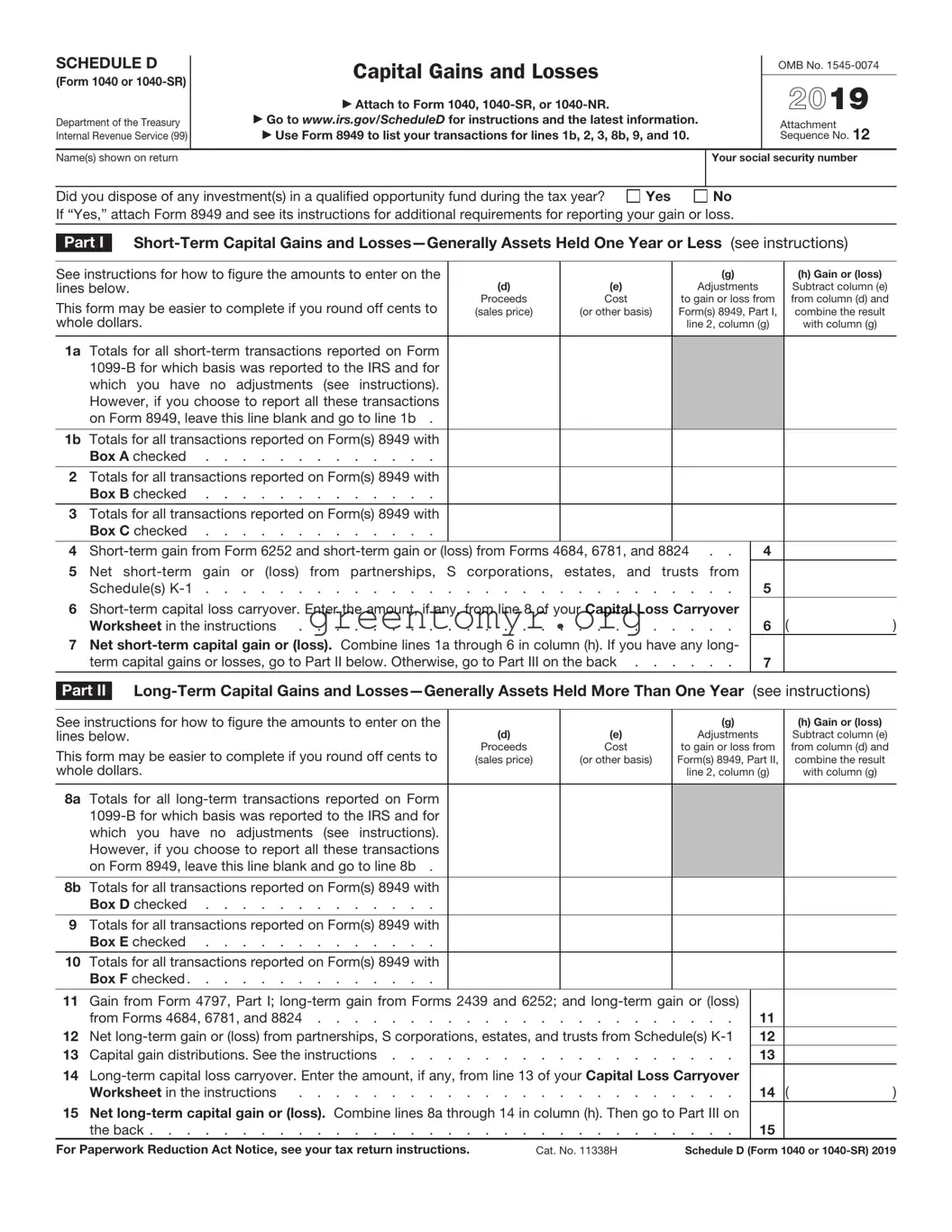16 Combine lines 7 and 15 and enter the result . . . . . . . . . . . . . . . . . .
•If line 16 is a gain, enter the amount from line 16 on Form 1040 or 1040-SR, line 6; or Form 1040-NR, line 14. Then go to line 17 below.
•If line 16 is a loss, skip lines 17 through 20 below. Then go to line 21. Also be sure to complete line 22.
•If line 16 is zero, skip lines 17 through 21 below and enter -0- on Form 1040 or 1040-SR, line 6; or Form 1040-NR, line 14. Then go to line 22.
17Are lines 15 and 16 both gains?
Yes. Go to line 18.
No. Skip lines 18 through 21, and go to line 22.
18If you are required to complete the 28% Rate Gain Worksheet (see instructions), enter the
amount, if any, from line 7 of that worksheet . . . . . . . . . . . . . . . . .
19 If you are required to complete the Unrecaptured Section 1250 Gain Worksheet (see instructions), enter the amount, if any, from line 18 of that worksheet . . . . . . . . .
20Are lines 18 and 19 both zero or blank?

 Yes. Complete the Qualified Dividends and Capital Gain Tax Worksheet in the instructions for Forms 1040 and 1040-SR, line 12a (or in the instructions for Form 1040-NR, line 42). Don’t complete lines 21 and 22 below.
Yes. Complete the Qualified Dividends and Capital Gain Tax Worksheet in the instructions for Forms 1040 and 1040-SR, line 12a (or in the instructions for Form 1040-NR, line 42). Don’t complete lines 21 and 22 below.

 No. Complete the Schedule D Tax Worksheet in the instructions. Don’t complete lines 21 and 22 below.
No. Complete the Schedule D Tax Worksheet in the instructions. Don’t complete lines 21 and 22 below.
21If line 16 is a loss, enter here and on Form 1040 or 1040-SR, line 6; or Form 1040-NR, line 14, the smaller of:
• The loss on line 16; or |
} |
• ($3,000), or if married filing separately, ($1,500) |
Note: When figuring which amount is smaller, treat both amounts as positive numbers.
22Do you have qualified dividends on Form 1040 or 1040-SR, line 3a; or Form 1040-NR, line 10b?
Yes. Complete the Qualified Dividends and Capital Gain Tax Worksheet in the instructions for Forms 1040 and 1040-SR, line 12a (or in the instructions for Form 1040-NR, line 42).




 Yes.
Yes. 
 No.
No.